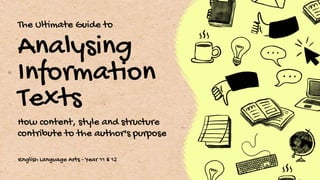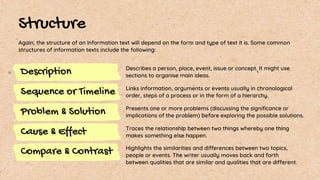The document provides an overview of how to analyze informational texts. It discusses determining an author's purpose and point of view, considering tone and bias, differentiating between facts and opinions, and examining how content, structure, style, evidence, and rhetorical devices help achieve the author's intent. The document is intended to teach students how to effectively analyze various features of informational texts.




















